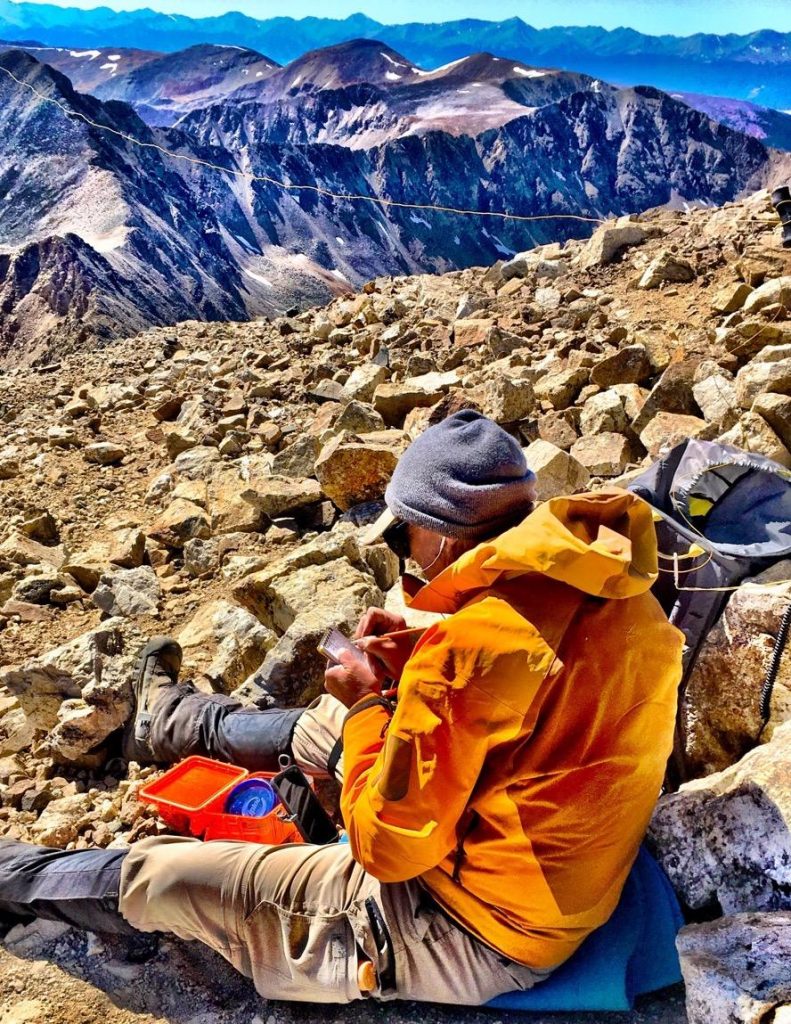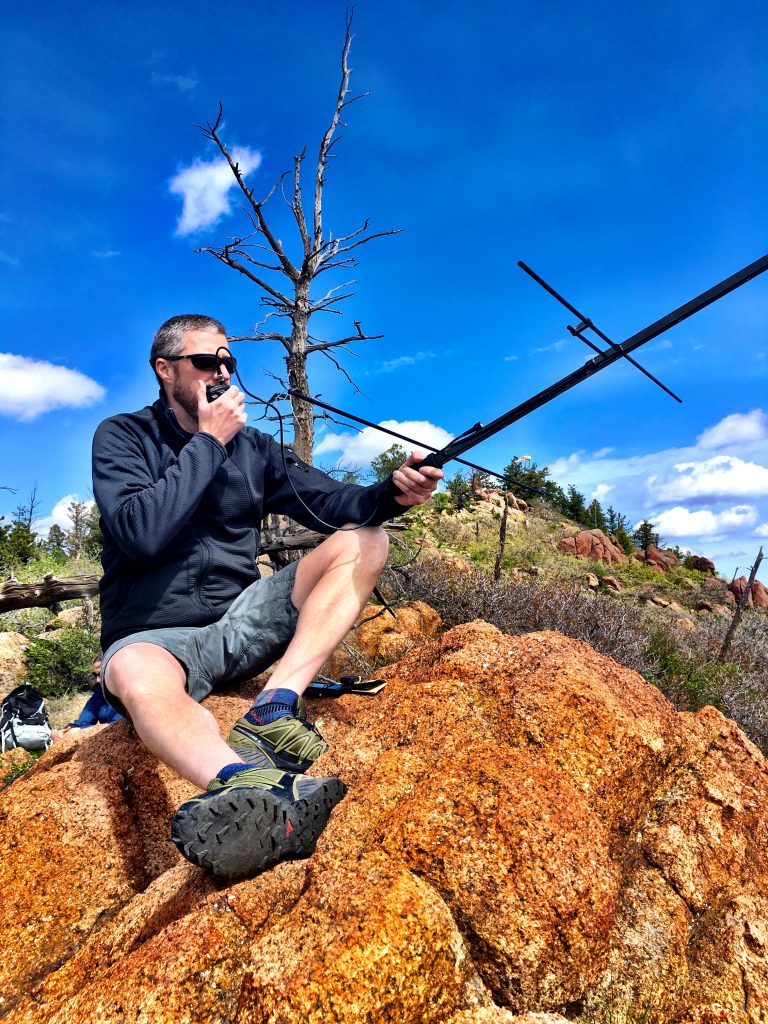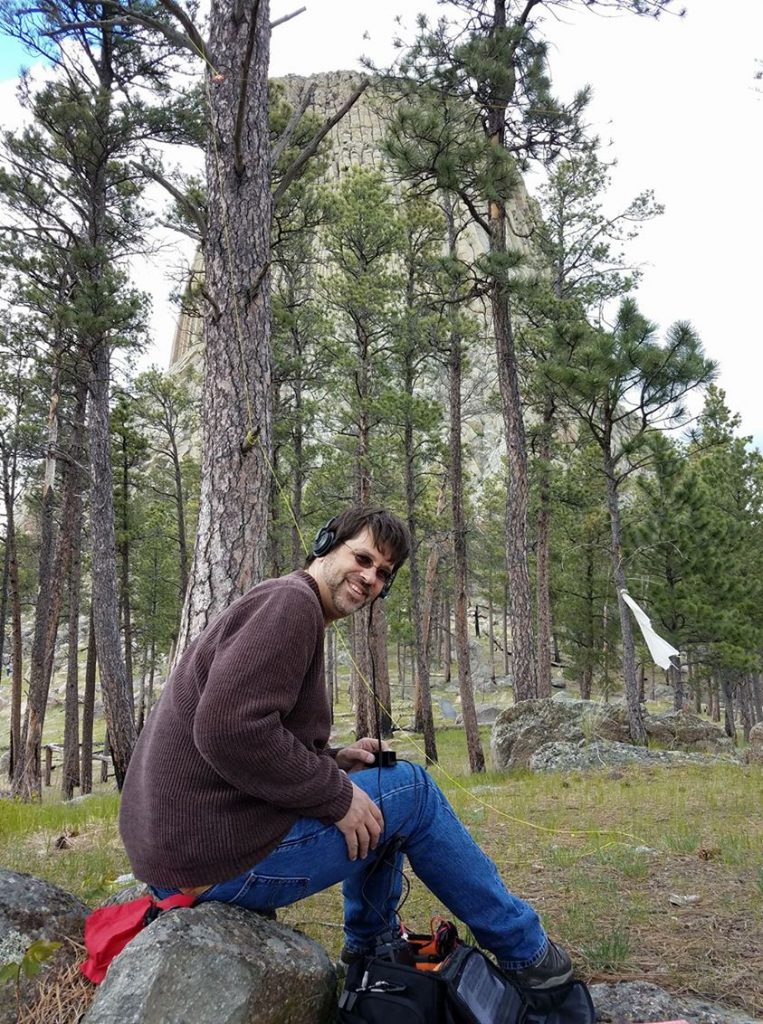A common train of thought in Ham Radio is you need to have a giant station in order to have fun and be successful. While there is no doubt that a giant Yagi on a big tower will outperform a half-wave dipole at 30 feet, and a kilowatt will bust through a pileup more easily than a 5-watt transceiver, having fun and being successful are two measures of Ham Radio enjoyment that are subject to a lot of interpretation.
QRP is no stranger to Ham Radio. Plenty of people have enjoyed low-power pursuits for decades. But for some time, a group of operators has been taking their low-powered stations into the field as part of their hiking or camping excursions, or simply as a way out of antenna restrictions at their house or condo. As work and family commitments have evolved over the last 20 years, some Hams may not have time or space to assemble even a modest station at home. Bringing as little gear as needed to make an afternoon of QSOs is what backpack QRP work is all about.
Larry Makoski, W2LJ, has authored a QRP blog for many years. “I like doing portable work because it gets me out into the fresh air and sunshine. Working with a small transceiver, some wire and a battery takes me back to my Novice days, when each QSO was exciting and an accomplishment. Bottom line is that it’s fun and never boring.”
Stuart Thomas, KB1HQS, has combined Ham Radio and the outdoors for a long time. “I have been a backpacker since my Boy Scout days, so adding my QRP radio to my pack is a perfect union of my two favorite hobbies.” Stuart literally wrote the book on portable operating. Check it out for a wealth of ideas.
Lightening My Load
My Ham Radio path was no different than many other DXers and contesters. Over time, I assembled a nice station with a 70-foot tower, two triband Yagis, good wire antennas for the low bands, plus Yagis for 6 and 2 meters. I worked a lot of DX with that station. But I got divorced and had to take the station down, and I’ve lived in apartments ever since.
Downsizing and acquiring a more minimalist approach to life began to appeal to me, and I decided to incorporate my minimalist lifestyle into my Ham Radio pursuits. Over time, I got rid of more and more gear and started operating portable regularly. I discovered just how small your station can get without sacrificing enjoyment or the ability to make QSOs reliably. I found operating events and programs that catered to portable and QRP operating, going to a location where I became the station people wanted to work. Through all of that, I learned a lot about setting up a station that weighed less than ten pounds (sometimes less than five pounds) and had a great time.
What You Need (It’s Less Than You Think)
There are infinite ways to create a backpack QRP station, and every operator is different and will have different wants and ideas for their setup. Part of the fun is determining what will work best for you. I’ll touch on some of the basic configurations and leave the rest to your imagination and desire for experimentation.
All Ham Radio stations, regardless of size or location, need a transceiver, a power supply, and the tool to communicate, such as a microphone, Morse code key, or digital interface. There are other accessories that can make your field operations more comfortable or more convenient, but they will come at the cost of weight. As I’ve mentioned in other portable operating blogs, you can bring whatever you want, provided you are willing to carry it. However, as with any kind of hiking, the less weight you carry, the less tired you’ll get. Find the balance of gear and comfort that works for you.
My first goal for backpack QRP work was to have a station that weighed less than ten pounds and could be comfortably taken up the hills and mountains of Connecticut and other New England states. I had a bit of money to spend and knew I was interested in both HF and VHF/UHF operating. I ultimately decided on the Yaesu FT-817 transceiver. It covered all bands and modes I wanted to use, weighed just under two pounds, and was easy to use.

[Steve Galchutt, WG0AT, photo]
I used a 7Ah, 12-volt sealed lead acid (SLA) battery I’d acquired for free from my IT department, and used a small CW paddle and the 817’s hand mic. For the antenna, I opted for a 33-foot random wire made out of 26-gauge stranded copper wire fed with a 4:1 balun by LDG Electronicsand a 20-foot collapsible fiberglass mast set up in an inverted-L configuration. I kept the counterpoise wire about three feet off the ground. I taped the radiator directly to the mast with electrical tape. This configuration required an antenna tuner, so I opted for the LDG Electronics LDG Z-817, which had lots of positive reviews. I fed this to my rig with 20 feet of RG-8X coax. For headphones, I used cheap earbuds. Total station weight was around 13 pounds—not my goal, but still pretty light. Check out this video of me operating from Pigeon Key in the Florida Keys with a hybrid of this setup.
While the random wire vertical I had was effective and allowed for operating on multiple bands, I didn’t like the extra weight and setup time the antenna tuner required. There was also the issue of the battery. SLAs are cheap, rugged and reliable, but they also weigh about six pounds. I decided finding a lighter battery pack was critical to my enjoyment. After some research, I opted for a lithium polymer battery pack made by Tracer Power; this cut my power source weight from six pounds to less than two. I also did some research into antennas, and recalled the wisdom from my friend and Elmer Ward Silver, N0AX: “A resonant half-wave dipole is a darn good antenna.”
I ultimately found the products made by SOTABeams, a company based in the UK that manufactures quality gear for backpack QRPers interested in the Summits On The Air (SOTA) Ham Radio Award. I purchased their Band Hopper dipole, a three-band half-wave dipole made of light-gauge wire that uses alligator clips to make the antenna physically resonant on 40, 30 or 20 meters. No traps are used and no antenna tuner is needed. It comes with 30 feet of RG-174 coax. RG-174 is very thin and has more loss than standard RG8 coax, but it is exceptionally lightweight. It’s a reasonable trade-off, and the loss isn’t much of an issue on 40 and 20 meters. With these purchases, I dropped my total station weight down from 13 pounds to 8. A significant reduction!
A lot of backpackers use an end-fed half wave (EFHW) antenna, such as the Par End-Fedz from Vibroplex. These antennas require no counterpoise and only one support. Get the end of the antenna over a tree and you’re in business.
Still others learn solid antenna design and theory and erect some excellent wire antennas with gain when they go on an activation. There are endless designs for portable antennas. Enjoy experimenting and finding one (or two) that work for your operating style.
Raising the Antenna
For an antenna to be effective, you need to be able to get it in the air. Much has been written about how to throw a wire into a tree. For me, I found a giant 4-ounce fishing weight, painted it bright orange, and used a small piece of twine to throw it over a handy branch and raise my dipole. You can use all sorts of things: a full water bottle, a golf ball with an eye screw inserted into it, an old combination lock—anything that is light enough to throw over a tree branch but heavy enough that it won’t get hung up in the trees while trying to come down. Some people even use a wrist rocket to get the projectile over the nearest convenient branch.
Sometimes There Aren’t Enough Trees
One fine autumn day a few years ago, I took my gear and ascended to the top of Mount Cardigan in New Hampshire to activate it for the SOTA program. When I got there, I learned that I didn’t do enough planning. The mountain was above the tree line, and there were no trees to support my antenna. I was lucky and made do with an improvised mounting to an observation tower, but it was not ideal and my activation suffered. I realized I needed a mast that I could bring with me that could raise the antenna to a good height. Back to SOTABeams, where I found its Travel Mast. Only 26 inches long when collapsed, it extends to nearly 33 feet, a perfect quarter wave for 40 meters. It pairs with the Band Hopper dipole nicely, and you can use the antenna and the rope lead it comes with as the three supports holding the mast up. Best of all, a single person can raise this antenna. Check out the SOTABeams video on how this is done.
You can use several other things for masts. Many backpack QRP operators use 20-foot crappie fishing poles or telescoping carbon fiber fishing poles. And again, if your operating site has lots of trees, you may not need a mast at all.
Lighter Radios for Backpack Work
Most of us are familiar with the QRP transceivers by the big manufacturers. The tried-and-true Yaesu 817 has recently been replaced by the Yaesu FT-818. Elecraft offers both the KX2 and KX3 low-power transceivers. And Icom just announced plans for their new IC-705 low-power all-mode rig. But there are a lot of other lightweight QRP radios on the market that are worth exploring. Sometimes I know I’m only going to do CW on an activation, for example. I purchased a YouKits HB-1B, a 4-watt CW-only rig that offers a lot of features for a very reasonable price. The internal battery will keep you on the air for an entire afternoon, and with just the radio, CW paddle, ear buds and an antenna, I can get my complete station weight down to less than five pounds. Not bad!

[Stuart Thomas, KB1HQS, photo]
QRP Awards and Events
While you don’t need an event to take your gear on a hiking trip, some events geared toward backpack QRP operating will allow you to operate from a desirable location and help you get more QSOs in your log.
Summits on The Air (SOTA) is a worldwide award that focuses on transmitting from mountain summits. Most qualifying summits don’t require major hiking skills; if you can walk, you can activate a lot of summits.

[Katie Allen, WY7YL, photo]
Parks on The Air (POTA) is not strictly a QRP activity, but lots of QRPers participate. Take your gear to one of thousands of state parks or forests and set up for an afternoon or a weekend.
US Islands is also not strictly QRP, but the program allows operation from over 17,000 islands in lakes, rivers and streams within the US. You can drive to many qualified islands as well!
The Adventure Radio Society offers monthly QRP contests called the Spartan Sprint, where QRPers take their gear outdoors and set up for a couple hours. They also offer the Flight of the Bumblebees event in the summer.
QRP To The Field has a daylong event in the spring, and the Zombie Shuffle on Halloween. Take your gear, set up outdoors, and work as many other stations as you can.
Well-known QRP operator Larry Makoski, W2LJ, runs his Skeeter Hunt QRP event in August.
QRP-ARCI is an international QRP club. They sponsor lots of on-air events throughout the year, from short “sprint” contests to weekend-long competitions. You don’t have to be a member to participate, either.
Conventional contests all have a QRP category. North American QSO Party contests are held twice a year, once for each mode (CW, SSB and digital). They’re only 12 hours long and are a nice way to spend an afternoon in the field. You can also take part in your state’s QSO party from a rare county or work another state’s QSO party and focus on making QSOs with stations in those respective states.
Of course, don’t forget about ARRL Field Day! The ARRL offers a separate category for a QRP station with a battery power source, and you get a 5x scoring bonus!
With a little ingenuity and a willingness to experiment, you can be adding QRP radio to your hiking, camping or business travel. While many traditionalists will tell you “life’s too short for QRP,” there’s a ton of evidence to the contrary. QRP operating is rewarding and enjoyable, made even more so with an incredible mountain view or a babbling brook nearby. With the outdoors as your shack, QRP offers a respite from your home shack, a great technical challenge and QSOs aplenty. Ignore the traditionalists— do more with less!


Pingback: Backpack QRP Basics: Creating a Backpack QRP Station - Ham Radio News